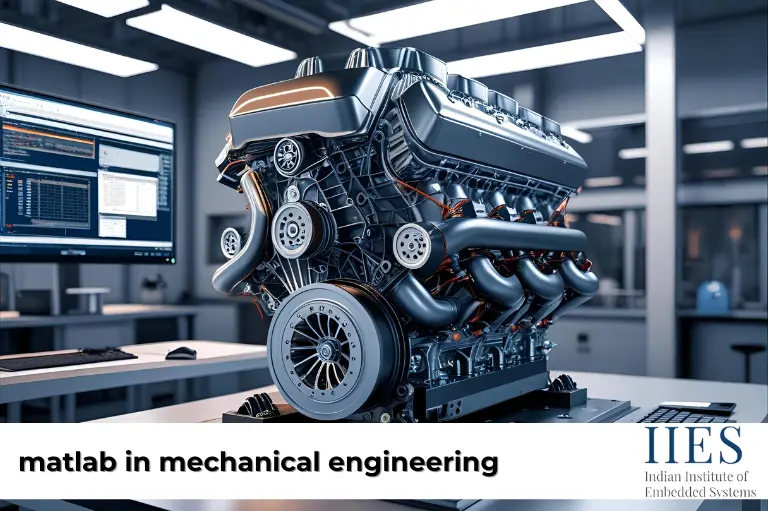
MATLAB in Mechanical Engineering is more than just a programming tool—it’s a powerful engine driving modern mechanical engineering. From designing safer vehicles to optimizing robotics and energy systems, MATLAB empowers engineers to solve complex challenges with precision, speed, and creativity.
MATLAB in Mechanical Engineering simplifies simulation, data analysis, and system modeling, helping engineers design innovative, efficient solutions and achieve highly accurate project outcomes with great ease.
Mechanical engineering has always been about balancing design, performance, cost, and safety. Traditionally, engineers relied heavily on physical prototyping, which was time-consuming and expensive.
Today, MATLAB provides a smarter path forward:
By offering a single environment for coding, simulation, and visualization, MATLAB coding for mechanical engineering bridges the gap between theoretical concepts and real-world applications.
From simulations to AI-driven insights, MATLAB supports nearly every stage of engineering design. Let’s explore the major areas where MATLAB is reshaping the way mechanical engineers work.
One of MATLAB’s strongest advantages is its ability to simulate and model mechanical systems.
For example, aerospace engineers use application of MATLAB in mechanical engineering to simulate aerodynamic performance of aircraft wings before wind tunnel testing.
Mechanical engineers must ensure that every design is strong, safe, and cost-effective. MATLAB supports this with:
This ensures lightweight yet durable designs—critical in industries like automotive and aerospace. Many students learn MATLAB course for mechanical engineers to gain hands-on expertise.
Control systems define how machines respond and adapt. MATLAB is the backbone for designing these systems:
With MATLAB’s Robotics Toolbox, engineers develop advanced motion planning, navigation, and sensor integration.
The future of engineering lies in intelligence—and MATLAB makes it accessible.
For example, manufacturers use MATLAB for mechanical AI tools to predict motor failures, reducing downtime and saving costs.
Mechanical systems generate signals—whether it’s vibration, noise, or images of manufactured parts. MATLAB helps engineers make sense of them.
This improves both efficiency and product reliability in industries like automotive and consumer electronics. MATLAB projects for mechanical engineers are often focused on such real-world applications.
Noise and vibrations are critical factors in product design. MATLAB supports:
Car manufacturers, for instance, rely on use of MATLAB in mechanical engineering to design quieter, smoother vehicles.
Theory becomes more meaningful when seen in practice. Real-world case studies show how MATLAB transforms industries like automotive, aerospace, manufacturing, and renewable energy.
These real-world examples showcase MATLAB’s impact on innovation, efficiency, and sustainability.
Engineering never stands still—new technologies emerge every year. MATLAB continues to evolve, supporting innovations in sustainable design, additive manufacturing, and automation. The role of MATLAB will continue to expand as industries adopt smarter, more sustainable technologies. Key trends include:
By adapting to these emerging needs, MATLAB will remain indispensable for mechanical engineers in the coming decades.
MATLAB is more than a tool—it’s a catalyst for innovation in mechanical engineering. From simulations and optimization to robotics and AI, it enables engineers to design smarter, safer, and more sustainable systems. As industries evolve, use of MATLAB in mechanical engineering ensures it will remain at the forefront of mechanical engineering breakthroughs.
MATLAB helps engineers design and analyze mechanical systems efficiently.
Engineers create digital models and run virtual tests to predict performance and optimize designs.
Yes, it models, simulates, and tests control systems. It also supports robotics development and automation.
Automotive, aerospace, and manufacturing industries use MATLAB to improve design accuracy and efficiency.
Yes, it provides practical skills for simulations, analysis, and real-world engineering projects.
Common projects include structural analysis, robotics simulations, and predictive maintenance.
Indian Institute of Embedded Systems – IIES